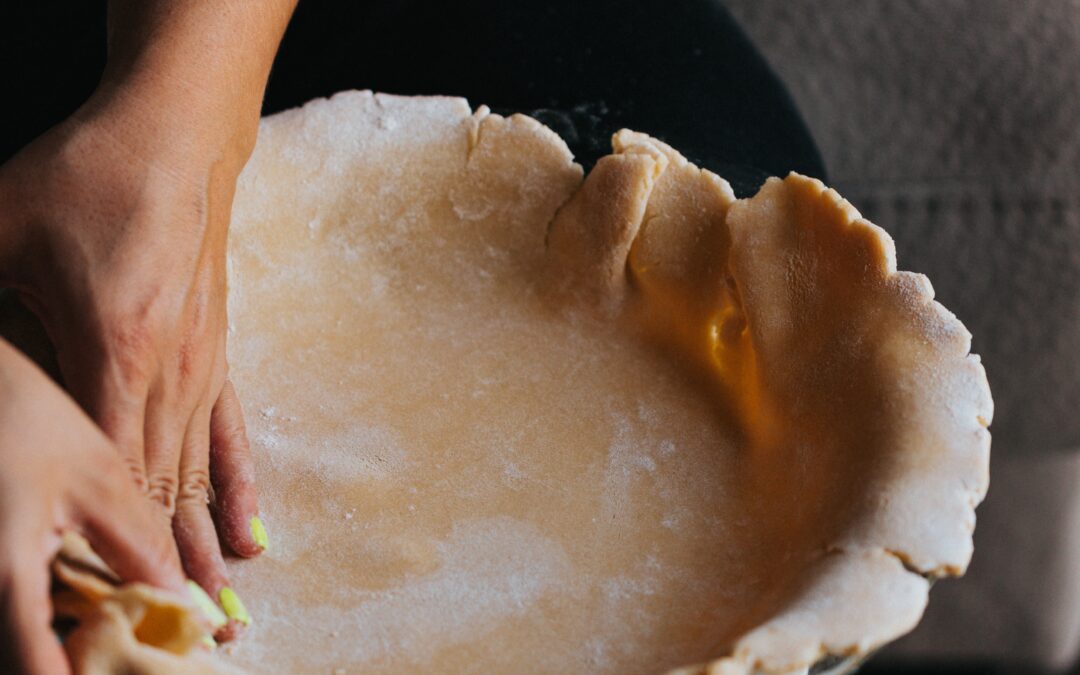At my house growing up, holidays were accompanied by a pie buffet. Pumpkin, coconut cream, and my personal favorite, chocolate pudding pie were always among the dessert selections. While they each stand alone in terms of flavor, all three of these pies have something in common: par-baking.
Par-baking is the practice of baking, either fully or partially, a pie crust before adding the filling. This is done with most custard pies because the custard cooks much faster than the crust itself. Par-baking the crust prevents the finished pie from being soggy or the crust from being undercooked.
Okay… what does this have to do with education?
No, it’s not a nod or encouragement to Pi Day celebrations (though don’t get me wrong, I’ll never turn down some delectable Pi Day fun). Rather, it’s a guide for structuring your units.
The foundation of a good custard pie is its crust. Despite the fact that the filling is the part of the pie we’re most looking forward to, the crust is the key; it won’t matter how delicious the filling is if it’s set in a soggy or undercooked crust. Even the dollop of whipped cream on top won’t save a poorly crusted pie.
We should think of our unit plans like we think of custard pie.
The filling of the pie is the bulk of our lessons in the unit. It answers the questions: What are the core skills I hope students can demonstrate at the end of this unit? What can I guarantee will be covered and assessed? What standards will I expect students to master? It’s all of the things that good teachers are already writing into our lessons.
The crust is the prior knowledge that students need in order to be successful in the unit. Those are the skills that students learned, developed, and honed in prior years. In a sense, the ingredients for the crust have already been mixed and rolled and pressed into the pie pan. However, it’s up to us to activate that knowledge and remind students of this foundation. If we don’t par-bake this crust, or activate this prior knowledge before diving into our new lessons, the crust may not be able to hold up, leading to a soggy unfinished pie, learning that is incomplete.
Research from Carnegie Mellon University shows just how valuable activating prior knowledge can be. Their study, originally published in the journal Psychonomic Bulletin & Review, indicates that the human brain doesn’t have a fixed amount of working memory, but rather that working memory “interacts with the familiarity of elements that need to be processed” (Rea, 2015). In other words, the more familiar we are with the content that we’re learning, the easier it will be to ultimately comprehend. The opposite is equally true: the less familiar the chunks of information are, the less likely we are to retain and understand them.
New units and lessons should always be structured with an activity intended to activate this prior knowledge.
But how do you know what students already know? This knowledge is one of the benefits of a school-wide curriculum mapping initiative, especially one that works to very clearly articulate the curriculum and the benchmarks met in each grade level. With a school full of detailed curriculum maps, it can be easy to learn about the “crust” the teacher before you prepared.
There are tons of strategies out there to plug and play into your own units in an effort to activate prior knowledge. These pre-unit activities can be as easy as quick review questions for your students or a KWL chart, or they can be as complex as a game over those bygone materials. In the end, how you activate prior knowledge doesn’t matter; what matters is that we do it.
School years are busy, assemblies and activities come up, and snow days happen. In the face of ever changing schedules and numbered days, it’s easy to put aside these review sessions and the end of unit extension tasks. But these moments to activate prior knowledge can completely change our students’ abilities to process information. Don’t push the opportunities aside to save time. Even though it might feel like a wise choice to jump right in when our time is running short, activating prior knowledge could end up being the activity that caused your students to learn the material faster than before.
Take a tip from the bakery… par-bake the crust.
Works Cited
Rea, S. (2015, Aug. 13). New Information Is Easier To Learn When Composed of Familiar Elements. News, Carnegie Mellon University. https://www.cmu.edu/news/stories/archives/2015/august/reder-memory-learning.html.
Photo by Nathan Dumlao (Wooden Earth – Rolling Pins) on Unsplash




